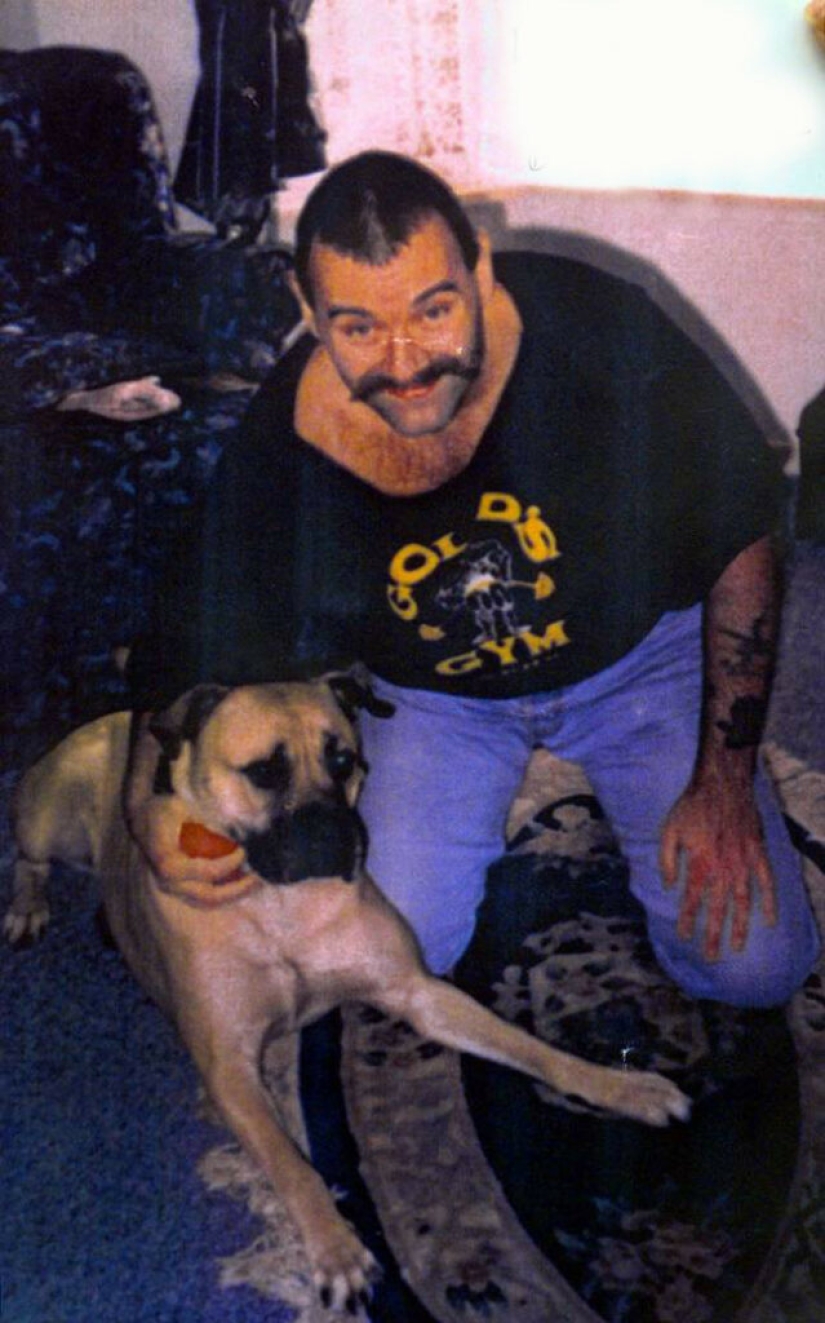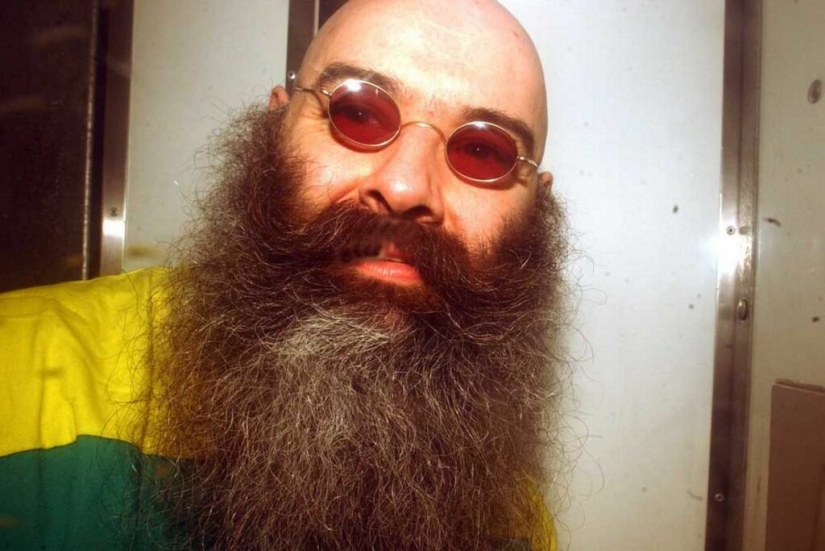Entertainer Charles Bronson is Britain's most aggressive prisoner
Categories: Celebrities
By Pictolic https://pictolic.com/article/entertainer-charles-bronson-is-britains-most-aggressive-prisoner.htmlEveryone knows such a thing as a recidivist. This means that the convicted person has not embarked on the path of correction and continues illegal activities. Charles Bronson is the most famous recidivist in the UK, famous for his cruelty and unpredictability. Let's face it, for any prison in Albion, Bronson is the most unwanted prisoner. What did this guy do?

Michael Gordon Peterson, which is exactly what Charles Bronson's real name looks like, was born on December 6, 1952 in Luton, Great Britain. His family was quite respectable, and our hero's uncle was even mayor of his city twice. Despite a happy childhood, Michael did not grow up a prosperous child. He was constantly fighting with classmates and stealing everything that was lying badly.

It is even surprising that young Peterson earned his first term only in 1974, at the age of 22. He committed an armed robbery of the post office, having extracted as much as 26 pounds from the cash register. In terms of our modern money, it was a grandiose 20 thousand rubles. The term, as for the first time, was impressive — 7 years, but Michael honestly served all 13. The fact is that the guy discovered in himself a rare ability to earn time without going outside.
Michael attacked his cellmates and jailers, mercilessly beating them with his hands, feet and everything that happened to be nearby. The prison chiefs were not happy with such a "guest" and tried to get the inadequate person to another correctional institution as soon as possible. Looking ahead, let's say that during his 40-year career as a criminal, Peterson visited 120 prisons and a closed psychiatric hospital.

In 1987, Michael was released and began looking for work. He was offered to try himself in underground fights without rules and he immediately agreed. Peterson changed his name and from that moment began to call himself Charles Bronson. In the ring, the fighter showed great skill, great strength and inexplicable cruelty. It is possible that Bronson should have thought about a career as a professional fighter, but criminal tendencies were stronger.
After being free for only two months, Charles Bronson robbed a jewelry store and found himself behind bars again. He was given 7 years again, but all these terms were for weaklings. The mischievous burly man continued beating the guards and fellow prisoners. At the same time, Bronson made a real show out of every fight.

One day he stripped naked, rubbed his whole body with oil and attacked the guards. Despite the arrival of help, the carnage lasted for a very long time — Bronson slipped out of the hands of opponents like an eel. Only the special forces soldiers who used the network managed to twist it.
In the early 90s, Charles was so tired of everyone that he was attacked by a crowd of prisoners with sharpeners. It was definitely not Bronson's day and the brawler almost died. His health was so seriously damaged that the servants of the law decided to release him ahead of time. By the way, Bronson did not hand over his abusers.
At the end of 1992, Charles was released, and in mid-1993 he returned to prison again. He was accused of illegal possession of weapons and preparation of an armed robbery. While the trial was going on, Bronson was having as much fun as he could. He took a prison librarian hostage and demanded a cup of tea, an inflatable doll and a helicopter. After playing on his nerves a little, Bronson released the hostage. This time he was sentenced to 8 years.

In the following years, Charles constantly took someone hostage. They were prisoners, guards, lawyers and even prison chiefs. Bronson's most unusual victim was an art teacher who gave him lessons. The poor guy had the courage to criticize the student's work, after which he did not have the best two days of his life. But Bronson generously let the teacher go, having kept him by his side for 44 hours. This was the last straw and the criminal was given a life sentence.
But even this did not become a reason for despondency. Bronson continued to do unpredictable things. Once in Balmarsh Prison, Charles took several Iraqis hostage. He made them call themselves the General and swore that he would eat one of them if something went wrong. The prisoner demanded that the authorities give him an Uzi submachine gun, 5,000 rounds of ammunition, an axe and a helicopter to fly to Cuba. At the trial about this case, he laughed and compared himself to Hitler.

All these antics made the court doubt the mental health of the criminal. Bronson was sent to a prison-type psychiatric clinic. He did not like it there and Charles began to fight for a return back to prison. He managed to escape from the ward several times and always after that he went to the roof of the building. Along the way, the "patient" destroyed everything he saw, from furniture to medical equipment. Each escape cost the hospital tens of thousands of pounds and therefore the criminal was returned to prison.
In 2001, Bronson married a woman from Bangladesh, Fatima Reiman. He met her by correspondence. This was his second marriage — he found his first wife while still at large, but she filed for divorce when Charles was in prison for the first time. After marrying a Muslim woman, Bronson converted to Islam and changed his name to Charles Ali Ahmed. The marriage lasted 4 years and when it broke up, Charles immediately forgot about Islam.

In prison, Bronson became seriously interested in drawing. His works are cartoons and comics from prison life with original author's signatures. For example, one drawing is signed like this:
Later, Charles began to write poetry as well. His work became very popular on the other side of the prison fence. He has received 11 awards from the Koestler Trust charity. Bronson's drawings are sold at auctions, and the author transfers the proceeds to his mother or transfers them to a charitable foundation.
In 2014, Charles Bronson changes his name again, this time becoming Charles Salvador. He stated that he had outlived himself as Bronson and takes the name in honor of the surrealist Salvador Dali. Also, Britain's most violent prisoner has vowed not to cause anyone any more trouble.

The prison authorities did not really believe in this good impulse and are still keeping an eye on Charles Salvador. But it seems that he really decided to quit aggression. He is passionate about drawing, poetry and writing books. The light has already seen 10 books by Charles devoted to various topics. Bronson is very versatile and writes both about fitness in a prison cell and about the psychology of prisoners.
In 2009, the film "Bronson" directed by Nicolas Winding Refn was released. The main role in it was played by British actor Tom Hardy. He had to work hard to get used to the image of his hero. Hardy gained 20 kg of muscle mass for the role and visited Bronson's prison several times. Charles even shaved off his trademark mustache and handed it over The fact that he used them when applying makeup.
As a result, the prisoner liked the film so much that he wished the actor to become the father of his child. Bronson says he can't conceive a child with his current wife, actress Paula Williamson, and trusts it to "the best actor in the UK." Tom Hardy refrained from commenting on this proposal. In any case, nothing will work out, since 38-year-old Williamson died under strange circumstances at her lover's house in 2019.

Now Charles Bronson continues to sit in prison and create. He is imprisoned in the most reliable correctional institution in England — Woodhill Prison. It is known for being the place of serving the sentence of the most terrible British maniac Robert Maudsley.
Recent articles

Most of us think that the color of the eggshell does not play any role and it is possible not to pay attention. But it's not and ...

The more we rely on technology, the more potential power hackers gain over us. It doesn't matter if their goal is to help or cause ...

Creating a good portrait is one of the most difficult tasks for any photographer. In order to make a really natural and memorable ...